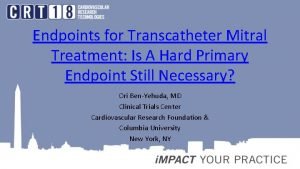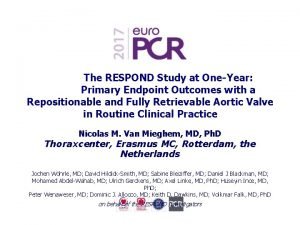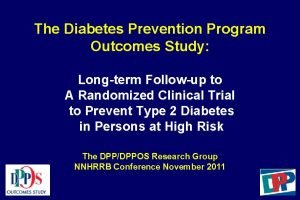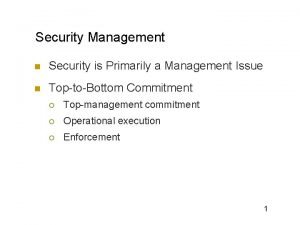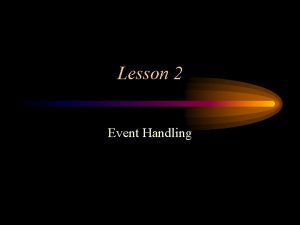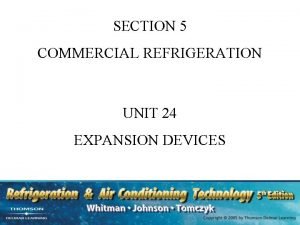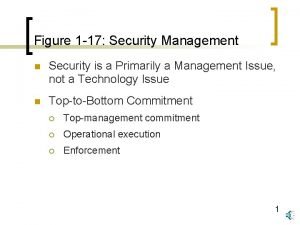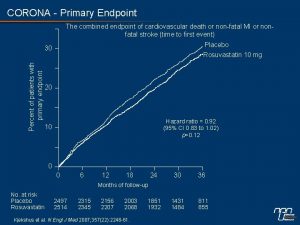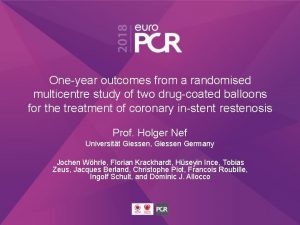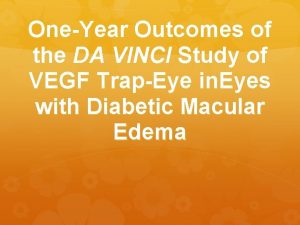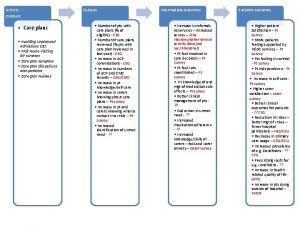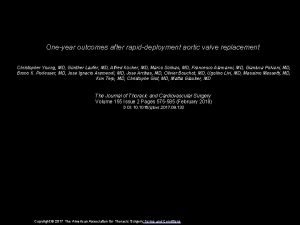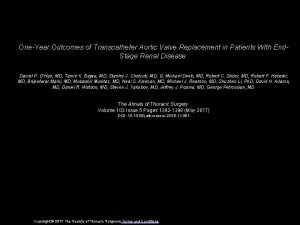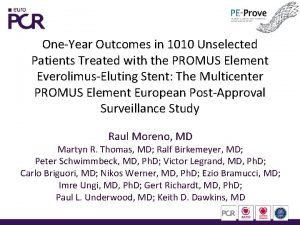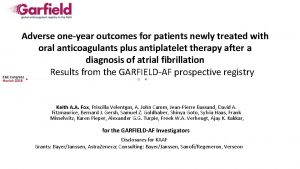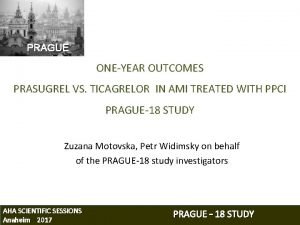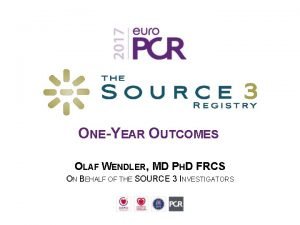The RESPOND Study at OneYear Primary Endpoint Outcomes















- Slides: 15

The RESPOND Study at One-Year: Primary Endpoint Outcomes with a Repositionable and Fully Retrievable Aortic Valve in Routine Clinical Practice Nicolas M. Van Mieghem, MD, Ph. D Thoraxcenter, Erasmus MC, Rotterdam, the Netherlands Jochen Wöhrle, MD; David Hildick-Smith, MD; Sabine Bleiziffer, MD; Daniel J Blackman, MD; Mohamed Abdel-Wahab, MD; Ulrich Gerckens, MD; Axel Linke, MD, Ph. D; Hüseyin Ince, MD, Ph. D; Peter Wenaweser, MD; Dominic J. Allocco, MD; Keith D. Dawkins, MD; Volkmar Falk, MD, Ph. D on behalf of the RESPOND Investigators

Speaker's name: Nicolas M Van Mieghem, MD, Ph. D I have the following potential conflicts of interest to report: • Institutional grant/research support: Abbott, Boston Scientific, Claret, Medtronic, Pulse. Cath BV The RESPOND study is sponsored and funded by Boston Scientific Corporation.

The Lotus ™ Valve • Controlled mechanical expansion for precise placement • Repositionable & fully retrievable • Functions early in deployment to provide hemodynamic stability • Adaptive seal conforms to irregular anatomical surfaces to minimize paravalvular leak Bovine Pericardium in Nitinol Frame Radiopaque Marker To aid precise positioning Adaptive Seal

RESPOND Study Design & Endpoints Prospective, single arm, multicentre post-market study of 1014 patients at 41 centres in Europe, New Zealand, and Latin America Lotus Valve available sizes: 23 mm, 25 mm, & 27 mm (for native annulus sizes ≥ 20 mm to ≤ 27 mm) Primary Endpoint • All-cause mortality @ 30 days and 1 year Key Secondary Endpoints • • VARC-2 composites: clinical efficacy @ 30 days; valve safety @ 1 year PVL pre-discharge Independent Data Assessments • • • Death and stroke assessed by an Independent Medical Reviewer (IMR) 100% monitoring of all VARC-2 safety events Baseline, pre-discharge, & 1 -year echo data by independent core laboratory Special thanks to Osama I. I. Soliman, MD, Ph. D, FACC, FESC Cardialysis Core Laboratory, Rotterdam, the Netherlands

Study Flow Intent-To-Treat Primary Endpoint Analysis N=1014 No Lotus Valve: n=18 Lotus Valve Implanted (As-Treated Population) n=996 30 -Day Follow-up or Clinical Event n=996 (100%) 1 -Year Follow-up or Clinical Event n=988 (99. 2%)

Baseline & Procedural Characteristics As-Treated Population (N=996) Comorbidities & Baseline Scores Age (Years) Gender (Female) Baseline PPM 80. 8 ± 6. 5 50. 8 13. 3% NYHA Class III or IV 64. 6% STS Score (%) 6. 0 ± 6. 9 Katz Index (frail if <6) 5. 6 ± 1. 0 Echocardiographic Measurements (Core Lab Assessment) AVA (cm 2) 0. 7 ± 0. 2 LVEF (%) MR (mod/severe) 14. 9% Mean gradient (mm. Hg) 49. 8 ± 10. 5 38. 0 ± 15. 5 AR (mod/severe) 11. 7% Peak gradient (mm. Hg) 61. 9 ± 24. 2 Procedur l Characteristics a Valve size implanted Vascular access site 23 mm 25. 8% Transfemoral 25 mm 40. 3% Subclavian 1. 9% 27 mm 33. 9% Transaortic 1. 5% 96. 6%

Baseline & Procedural Characteristics As-Treated Population (N=996) Comorbidities & Baseline Scores Age (Years) Gender (Female) Baseline PPM 80. 8 ± 6. 5 50. 8 13. 3% NYHA Class III or IV 64. 6% STS Score (%) 6. 0 ± 6. 9 Katz Index (frail if <6) 5. 6 ± 1. 0 Echocardiographic Measurements (Core Lab Assessment) AVA (cm 2) 0. 7 ± 0. 2 LVEF (%) MR (mod/severe) 14. 9% Mean gradient (mm. Hg) 49. 8 ± 10. 5 38. 0 ± 15. 5 AR (mod/severe) 11. 7% Peak gradient (mm. Hg) 61. 9 ± 24. 2 Procedur l Characteristics a Valve size implanted Vascular access site 23 mm 25. 8% Transfemoral 25 mm 40. 3% Subclavian 1. 9% 27 mm 33. 9% Transaortic 1. 5% 96. 6%

Primary Endpoint Cumulative Event Rate (%) All-cause mortality in the ITT Population (N=1014) was 2. 0% at 30 days and 12. 0% at 1 year 15 ITT population (N=1014) As-treated population (N=996) 12 9 6 3 0 0 30 60 90 120 150 180 210 240 270 300 330 360 390 At risk ITT: 1014 993 As-tx: 996 981 Days Since Index Procedure 974 967 826 823 Primary endpoint of all-cause mortality in the ITT population calculated per protocol as binary rates; chart shows cumulative event rates ± 1. 96 SE.

Safety Summary As-Treated Population All-cause mortality Cardiovascular mortality All stroke Disabling stroke 30 Days (N=996) 2. 2% 2. 0% 3. 2% 2. 3% Life-threatening or disabling bleeding 2. 2% Major vascular complications 3. 0% Myocardial infarction 0. 7% Acute kidney injury (Stage 2 or 3) 1. 6% Repeat procedure for valve-related dysfunction 0. 1% Prosthetic valve thrombosis 0. 4% Prosthetic valve endocarditis 0. 2% Permanent pacemaker implanted Among all patients 30. 0% (299/996) Among pacemaker-naïve patients 34. 6% (299/864) 1 Year (N=988)

Safety Summary As-Treated Population All-cause mortality 30 Days (N=996) 1 Year (N=988) 2. 2% 11. 7% 2. 0% 7. 5% 3. 2% 4. 9% 2. 3% 4. 0% Life-threatening or disabling bleeding 2. 2% 3. 5% Major vascular complications 3. 0% 3. 3% Myocardial infarction 0. 7% 1. 7% Acute kidney injury (Stage 2 or 3) 1. 6% 1. 7% Repeat procedure for valve-related dysfunction 0. 1% 0. 2% Prosthetic valve thrombosis 0. 4% 0. 8% Prosthetic valve endocarditis 0. 2% 1. 3% Cardiovascular mortality All stroke Disabling stroke Permanent pacemaker implanted Among all patients 30. 0% (299/996) 32. 0% (316/988) Among pacemaker-naïve patients 34. 6% (299/864) 36. 8% (316/858)

Echocardiographic Outcomes As-Treated Population, Core Lab. Adjudicated Data Mean Aortic Gradient (mm. Hg) 1. 8 ± 0. 4 (n=516) 2, 0 80 1, 6 60 1, 2 40 20 0 38. 0 ± 15. 5 (n=923) 0. 7 ± 0. 2 (n=877) Baseline 0, 8 10. 8 ± 4. 6 (n=927) Discharge 10. 8 ± 5. 1 (n=542) 1 Year 0, 4 0, 0 Mean Effective Orifice Area (cm 2) 1. 8 ± 0. 5 (n=854) 100

Aortic Regurgitation As-Treated Population, Core Lab. Adjudicated Data Percentage of Evaluable Echocardiograms 100 Aortic Regurgitation 1, 5 10, 1 80 Paravalvular Regurgitation 0, 4 0, 3 7, 7 11, 1 5, 1 10, 6 33, 0 Moderate 60 40 20 0 Severe Mild 25, 7 80, 8 83, 9 Trace None 29, 7 Baseline Discharge 1 Year (N=927) (N=934) (N=545) Among patients in whom echocardiography was performed and with follow-up data available for the given time points.

NYHA Functional Class As-Treated Population P<0. 001 Percentage of Patients 100 7, 1 0, 7 0, 3 8, 3 10, 2 80 39, 0 60 IV 39, 4 62, 4 III II 40 20 0 I 52, 0 50, 1 Baseline 30 Days 1 Year (N=925) (N=757) (N=758) 26, 8 3, 7 Among surviving patients for whom NYHA Class was recorded and with follow-up data available for the given time points; P-value is from generalized Mc. Nemar’s test.

Depth Guard Deployment Technology The Lotus™ Valve LOTUS with Depth Guard™ & LOTUS Edge™ Final depth Maximum deployment depth Depth Guard technology: • Limits depth of valve frame during deployment • Reduces interaction with LVOT & conduction system LOTUS Edge also features: • Improved delivery with lower profile system and greater catheter flexibility, reduced proximal profile, & one-view locking Maximum deployment depth Final depth 30 -Day Outcomes from the RESPOND Extension Study using LOTUS with Depth Guard Thursday 18 May Room 342 B @ 8: 30

Conclusions One-year outcomes from RESPOND confirm the safety and efficacy of the Lotus Valve when used in routine clinical practice • 11. 7% mortality at 1 year post-procedure • Patients maintained excellent valve hemodynamics at 1 year • New permanent pacemaker in 36. 8% of patients • Minimal paravalvular regurgitation (core lab-adjudicated) • 94. 5% of patients with no/trivial PVL at 1 year • No patients with severe PVL; moderate PVL in 0. 4% of patients Pacemaker rates calculated among patients without a prior pacemaker at baseline.
 How to find missing endpoint
How to find missing endpoint Hard endpoint vs soft endpoint
Hard endpoint vs soft endpoint Endpoint outcomes
Endpoint outcomes Diabetes prevention program outcomes study
Diabetes prevention program outcomes study Animal response to stimuli
Animal response to stimuli Plan protect respond cycle
Plan protect respond cycle Inquiry letter definition
Inquiry letter definition Object respond to an event by writing
Object respond to an event by writing How do consumers respond to various marketing efforts
How do consumers respond to various marketing efforts External equalizer expansion valve
External equalizer expansion valve How to respond to teacher feedback
How to respond to teacher feedback Ni hăo
Ni hăo Ariba faurecia
Ariba faurecia Plan protect respond cycle
Plan protect respond cycle Producers respond to consumers' positive economic votes by
Producers respond to consumers' positive economic votes by Plants called sundews have rounded green leaves
Plants called sundews have rounded green leaves

